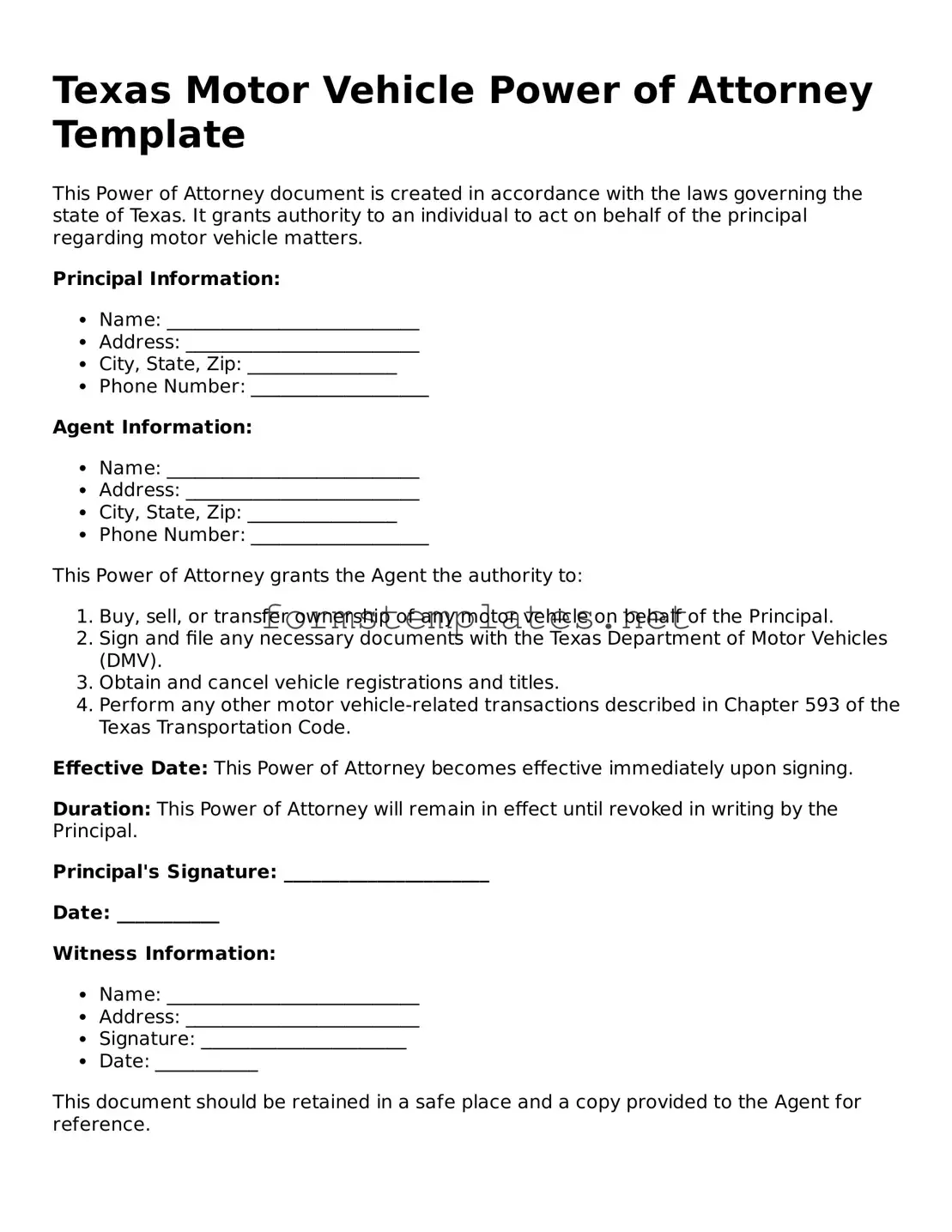The Texas Motor Vehicle Power of Attorney form allows an individual (the principal) to authorize another person (the agent) to act on their behalf regarding motor vehicle transactions. This includes tasks such as signing documents, transferring titles, and registering vehicles.
Who can be designated as an agent?
Any competent adult can be designated as an agent. This can include friends, family members, or professionals such as attorneys or auto dealers. It's essential to choose someone you trust, as they will have the authority to make decisions related to your vehicle.
The agent can perform a variety of tasks, including:
-
Signing title documents
-
Registering or renewing vehicle registrations
-
Completing vehicle sales or transfers
-
Applying for duplicate titles
To complete the Texas Motor Vehicle Power of Attorney form, follow these steps:
-
Download the form from the Texas Department of Motor Vehicles website.
-
Fill in your name, address, and other required information.
-
Provide the agent's name and address.
-
Specify the powers granted to the agent.
-
Sign and date the form in the presence of a notary public.
Is notarization required?
Yes, notarization is required for the Texas Motor Vehicle Power of Attorney form. This ensures that the document is legally binding and that the signatures are verified.
How long is the Power of Attorney valid?
The Power of Attorney remains valid until you revoke it or until the specific task is completed. If you want to cancel it before that, you must provide a written notice to the agent and any relevant parties.
Can I revoke the Power of Attorney?
Yes, you can revoke the Power of Attorney at any time. To do this, provide a written notice to your agent and any entities that may have relied on the document. It's a good idea to also notify the Texas Department of Motor Vehicles if the agent has been acting on your behalf.
If your designated agent is unable to perform their duties, the Power of Attorney may become ineffective. You may need to appoint a new agent by completing a new form. Always ensure that your chosen agent is capable of fulfilling their responsibilities.
The completed Texas Motor Vehicle Power of Attorney form does not need to be submitted to any government agency unless it is required for a specific transaction. Keep the original document for your records and provide copies to your agent and any relevant parties when needed.
